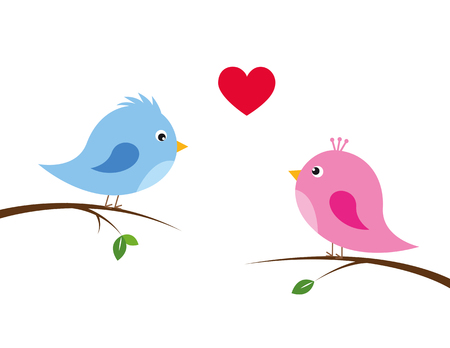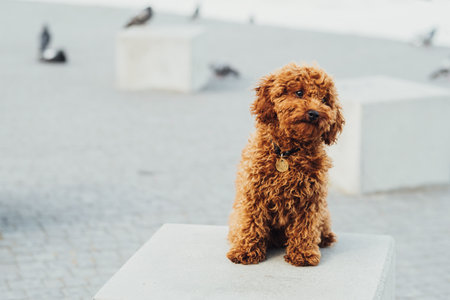Understanding Your Bird’s Space Needs
If you’re a bird parent in the U.S., giving your feathered companion enough space is crucial for their happiness and health. Many common pet birds, from parakeets to African greys, need more room than most people expect. Let’s break down why cage size matters and what space your bird really needs.
Why Cage Size Matters
Your bird’s cage isn’t just a place to sleep—it’s their home, playground, and gym. A cramped cage can lead to problems like:
- Boredom and stress: Birds are smart and active; tight spaces can make them frustrated or depressed.
- Physical health issues: Without space to stretch their wings or climb, birds may develop muscle atrophy, obesity, or even behavioral issues like feather plucking.
- Lack of exercise: Birds need room to move around, flap their wings, and play with toys to stay healthy.
Typical Space Requirements for Popular Pet Birds
The right cage size depends on your bird’s species. Here’s a quick guide for some of the most popular pet birds in the U.S.:
| Bird Species | Minimum Cage Size (inches) | Notes |
|---|---|---|
| Budgie (Parakeet) | 18W x 18D x 24H | Bigger is always better; provide horizontal bars for climbing. |
| Cockatiel | 20W x 20D x 24H | Ensure space for flying between perches. |
| Lovebird | 24W x 24D x 24H | Loves to play; add lots of toys and swings. |
| Caique/Conure | 24W x 24D x 30H | Needs plenty of room for activity. |
| African Grey/Amazon | 36W x 24D x 48H | Larger parrots require more space to thrive. |
| Cockatoo/Macaw | 36W x 48D x 60H+ | These big birds need very large cages—consider aviary size if possible! |
Remember:
The bigger the cage, the better for your bird’s physical and mental well-being. Always go up a size if you have the space at home—your feathered friend will thank you with more energy, healthier feathers, and a happier personality!
2. Common Signs Your Bird Needs More Room
Its important to pay close attention to your birds behavior and physical condition to make sure their cage is big enough. Birds need space to fly, stretch, and play—if theyre cramped, it can affect their health and happiness. Here are some easy-to-spot signs that may mean your bird needs a bigger cage:
Behavioral Signs
| Sign | Description |
|---|---|
| Feather Plucking | If your bird is pulling out its own feathers, it could be a sign of stress or boredom from not having enough space. |
| Aggression | Birds in small cages might become more aggressive toward people or other pets because they feel trapped. |
| Limited Activity | If your bird isn’t playing, flying, or exploring, the cage might be too small for them to move around comfortably. |
| Pacing or Repetitive Movements | Constant pacing back and forth or repeating the same motion can be a sign of frustration due to limited space. |
| Unusual Vocalization | Louder or more frequent screeching and squawking may indicate discomfort or unhappiness with their environment. |
Physical Signs
- Poor Feather Condition: Birds need room to preen and stretch; a cramped cage often leads to messy, damaged feathers.
- Muscle Weakness: Without space to fly or climb, birds can lose muscle tone and seem less active or even lethargic.
- Overgrown Nails and Beak: Lack of room for perches and toys can prevent natural wear-down, causing overgrowth issues.
Why These Signs Matter
If you notice any of these behaviors or physical changes in your feathered friend, its likely time to think about upgrading their living space. Giving your bird more room helps keep them physically healthy and mentally stimulated, which leads to a happier companion for you as well!

3. Evaluating Your Current Cage
Before you consider upgrading your bird’s cage, it’s important to take a good look at what your feathered friend is living in now. A proper evaluation helps you decide if a bigger or better setup is needed for their health and happiness. Here are some practical tips to help you assess your current cage:
Check the Cage Size
The most important factor is space. Birds need room to stretch their wings, move around, and play. If your bird can’t fully extend its wings without touching the bars or has trouble moving between perches, the cage may be too small. Here’s a quick guide to minimum cage size recommendations for common pet birds:
| Bird Type | Minimum Cage Size (inches) | Recommended Bar Spacing |
|---|---|---|
| Budgie/Parakeet | 18 x 18 x 24 | 1/2″ |
| Cockatiel | 20 x 20 x 24 | 1/2″ – 5/8″ |
| Caique/Lovebird | 24 x 24 x 30 | 1/2″ – 5/8″ |
| African Grey/Amazon | 36 x 24 x 48 | 3/4″ – 1″ |
| Macaw/Cockatoo | 36 x 48 x 60+ | 1″ – 1.5″ |
Assess the Layout and Perch Placement
A good cage layout encourages natural movement and exercise. Are there enough perches at different heights? Is there room for toys, food dishes, and water bottles without everything feeling cramped? Birds get stressed if they have nowhere to explore or perch comfortably.
- Diverse Perch Types: Offer natural wood, rope, and textured perches to help with foot health.
- Avoid Overcrowding: Too many accessories can make the cage feel even smaller.
- Toy Rotation: Swap out toys regularly to keep things fresh and stimulating.
Evaluate Enrichment Opportunities
Boredom can lead to behavioral problems like feather plucking or excessive screaming. Does your bird have enough to do during the day? Check if there are foraging toys, swings, ladders, or shreddable items available.
- Mental Stimulation: Add puzzle feeders or DIY foraging games.
- Sensory Enrichment: Provide safe branches or leafy greens to mimic nature.
- Physical Activity: Include swings, ropes, and climbing structures for exercise.
Cage Location Matters Too!
Your bird’s cage should be in a spot where they feel part of the family but not overwhelmed by noise or commotion. Make sure it’s away from drafts, direct sunlight, and kitchen fumes. Birds love being able to see what’s happening but also need a quiet corner for rest.
4. How to Choose the Right Cage for Your Bird
When you notice signs your bird needs a bigger cage, it’s important to know what to look for in a new enclosure. The right cage is essential for your bird’s health, happiness, and safety. Here’s what American bird owners should consider before upgrading:
Size Matters Most
Your bird needs plenty of space to stretch its wings, climb, and play. As a general rule, the cage should be at least twice as wide as your bird’s wingspan. If you have more than one bird, go even larger. Always aim for the biggest cage that fits your space and budget.
| Bird Type | Minimum Cage Size (inches) |
|---|---|
| Parakeet/Budgie | 18 x 18 x 24 |
| Cockatiel | 20 x 20 x 24 |
| Conure | 24 x 24 x 30 |
| African Grey/Amazon | 36 x 24 x 48 |
| Macaw/Cockatoo | 40 x 30 x 60+ |
Bar Spacing for Safety
The spacing between bars should be just right: too wide, and your bird could escape or get stuck; too narrow, and it may not see out well. Check this guide:
| Bird Type | Recommended Bar Spacing (inches) |
|---|---|
| Finch/Canary | 1/4” – 1/2” |
| Parakeet/Lovebird/Cockatiel | 1/2” – 5/8” |
| Caique/Conure/African Grey/Amazon | 5/8” – 3/4” |
| Cockatoo/Macaw | 1” – 1.5” |
Cage Shape: Think Horizontal Space
A wider cage is almost always better than a tall, narrow one—birds fly side-to-side more than up-and-down. Rectangular cages give birds more room to move around and feel secure.
Choose Safe Materials Only
Cages made from stainless steel or powder-coated metal are popular in the U.S. because they’re durable and non-toxic. Avoid cages with chipped paint or rusty spots—these can harm your pet.
Trusted American Brands for Quality Cages
If you’re looking for cages known for their safety and build quality, here are some brands that many U.S. bird owners trust:
- Prevue Pet Products: Affordable options for small to large birds.
- A&E Cage Company: Known for sturdy construction and variety.
- Kings Cages: Premium cages with lots of size choices and accessories.
- MidWest Homes for Pets: Easy-to-assemble designs great for home use.
Other Tips When Shopping for a Cage:
- Look for easy-access doors and feeder openings.
- Check if the bottom tray slides out for quick cleaning.
- Add plenty of perches, toys, and dishes to keep your bird entertained.
A Happy Bird Needs the Right Home!
Selecting the right cage ensures your feathered friend stays healthy and active. Use these tips to find a perfect match when it’s time to upgrade!
5. Making the Transition Smooth for Your Bird
Introducing Your Bird to a New Cage
Switching your bird to a bigger cage is exciting, but it can also be a bit stressful for your feathered friend. To make the move as smooth as possible, place the new cage next to the old one for a few days. This gives your bird time to get used to the sight and smell of their new home before moving in.
Minimizing Stress During the Move
Birds can be sensitive to change, so patience is key. Try to keep their routine as normal as possible during the transition. Talk softly and calmly to reassure them. It can also help to move your bird into the new cage at a time when theyre relaxed—usually after theyve eaten or during a quiet part of the day.
Tips for Reducing Stress
| Tip | Description |
|---|---|
| Keep Familiar Items | Move favorite perches and toys from the old cage into the new one first. |
| Let Them Explore | Allow your bird some supervised time to check out the new cage at their own pace. |
| Avoid Loud Noises | Keep things calm and quiet during the transition period. |
| Use Treats | Encourage exploration with small treats or favorite snacks inside the new cage. |
Arranging Perches and Toys for Comfort
When setting up the new cage, arrange perches at different heights and distances to give your bird options for climbing and resting. Mix up textures with natural wood and rope perches. Place toys in areas that are easy for your bird to reach, but dont overcrowd the space—your bird needs room to spread its wings!
Cage Setup Checklist
- Add food and water dishes in easy-to-reach spots.
- Include at least two perches of different materials.
- Rotate toys regularly to keep things interesting.
- Leave open space for flying or hopping around.
- Make sure nothing blocks doorways or prevents access to essentials.
Making It a Positive Experience
Praise your bird often when they show interest in their new cage. Give extra attention and gentle words during this time. If you have more than one bird, introduce them separately unless they are bonded pairs. With patience, lots of love, and these simple steps, your bird will soon feel right at home in their spacious new digs!

